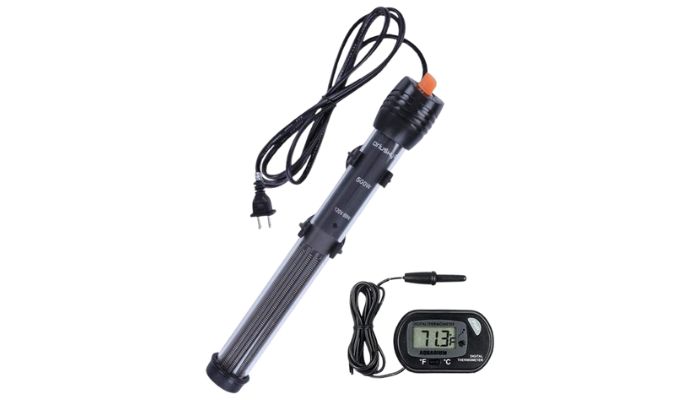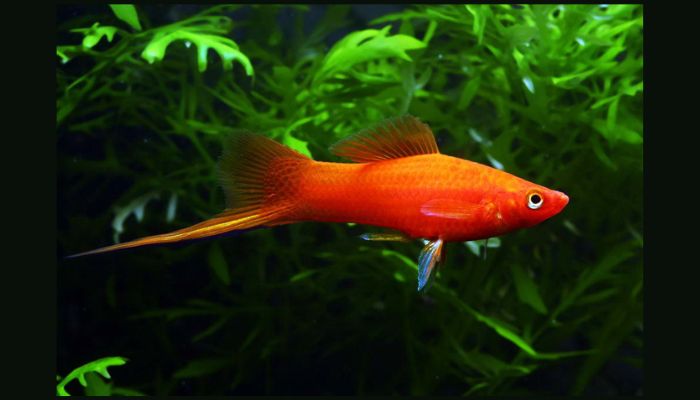If you’re diving into the world of aquarium keeping, one of the most popular and beginner-friendly fish you’ll come across is the swordtail platy. These vibrant, lively fish are not only beautiful to look at but also relatively easy to care for, making them a great choice for both beginners and experienced aquarists. In this Swordtail Platy Care Guide, we will discuss everything you need to know about swordtail platy care to ensure your fish thrive in their underwater home. From tank setup to feeding habits, water conditions, and health considerations, you’ll find all the information needed to become a pro in swordtail platy care.
Why Swordtail Platies Are a Fantastic Choice for Your Aquarium
Swordtail platies are a hybrid breed that combines the best features of swordtails and platies, two fish species that belong to the Poeciliidae family. With the elongated “sword” tail of swordtails and the vibrant colors of platies, these fish are a true joy to observe. What makes them even more appealing is their peaceful nature and ability to live in community tanks with other non-aggressive species. Additionally, swordtail platies are livebearers, meaning they give birth to free-swimming fry, making them an exciting choice if you’re looking to breed fish in your aquarium.
Ideal Tank Setup for Swordtail Platy Care
One of the most critical factors in swordtail platy care is providing them with the right environment. Swordtail platies are active swimmers, so they require ample space to move around freely. Here’s what you need for an ideal tank setup:
Tank Size: A minimum of 20 gallons is recommended for a small group of swordtail platies. If you plan to keep a larger group, consider upgrading to a 30- or 40-gallon tank. These fish are quite active, and the additional space helps them feel less stressed.
Water Parameters: Swordtail platies thrive in tropical freshwater environments. The water temperature should be maintained between 72°F to 82°F. They prefer slightly alkaline water with a pH level ranging from 7.0 to 8.3. Make sure to regularly monitor water quality, as clean water is vital for swordtail platy care.
Filtration and Flow: While swordtail platies don’t need a strong current, they do appreciate some water movement. A high-quality filter that keeps the water clean and oxygenated is a must. A sponge filter or hang-on-back (HOB) filter works well in most cases.
Substrate and Decor: Opt for a soft gravel substrate to protect your swordtail platy’s delicate fins. Include plenty of live or artificial plants, hiding spots, and rocks. While swordtail platies are not overly shy, they do appreciate places to hide when they feel threatened.
Tank Mates for Swordtail Platies
When it comes to choosing tank mates for your swordtail platies, you have a lot of flexibility. These peaceful fish do well in community tanks with other non-aggressive species. Here are some great tank mates to consider:
- Guppies
- Mollies
- Corydoras catfish
- Tetras (such as neon or cardinal tetras)
- Dwarf gouramis
- Snails and shrimp
Avoid housing them with overly aggressive species like cichlids or bettas, as these fish may nip at your swordtail platies’ fins or cause stress.
Swordtail Platy Feeding: What’s on the Menu?
Feeding your swordtail platies is relatively straightforward. They are omnivorous, which means they eat both plant matter and protein-based foods. A varied diet is essential to keep them healthy and vibrant. Here’s what you should include in their diet:
Flakes and Pellets: High-quality tropical fish flakes or pellets form the foundation of their diet. Look for food formulated specifically for platies or livebearers.
Frozen and Live Foods: In addition to their staple food, offer frozen or live foods such as brine shrimp, daphnia, or bloodworms. These protein-rich options encourage healthy growth and vibrant colors.
Vegetables: Don’t forget to include vegetables in their diet. Blanched spinach, zucchini, or peas are great options to keep their digestive system in good shape.
Make sure not to overfeed your swordtail platies. Feed them small amounts two to three times a day, and only give them as much as they can eat within two to three minutes. Overfeeding can lead to water pollution and health problems.
Swordtail Platy Breeding: A Fun and Fascinating Process
Swordtail platies are prolific breeders, and if you have both males and females in your tank, you might soon find yourself with baby platies. Breeding swordtail platies is relatively simple, and they don’t require any special conditions to start reproducing.
Males vs. Females: One of the most distinctive features of swordtail platies is the males’ long, sword-like tail fin. Females are generally larger and more robust. To encourage breeding, make sure you have a ratio of one male to two or three females to reduce stress on the females.
Gestation and Birth: Swordtail platies are livebearers, which means they give birth to live young rather than laying eggs. The gestation period typically lasts about 28 to 30 days. Once the fry are born, they are fully formed and can swim immediately.
Fry Care: If you want to raise the fry, it’s essential to separate them from adult fish, as they may be eaten. Use a breeding box or a separate tank to keep the fry safe. Feed them finely crushed flakes or specialized fry food.
Common Health Issues and How to Prevent Them
Like all fish, swordtail platies can encounter health issues, but with proper care, these problems are often avoidable. Regularly monitor their behavior and physical appearance to catch any signs of illness early.
Here are some common health problems in swordtail platies and how to address them:
Ich (White Spot Disease): Ich is a parasitic infection that appears as small white spots on the fish’s body. If you notice ich, raise the tank temperature slightly (to around 82°F) and treat the tank with medication specifically for ich.
Fin Rot: This bacterial infection causes the fins to become ragged and discolored. Poor water quality is often the cause, so improve filtration and perform water changes. Use antibiotics if the condition worsens.
Swim Bladder Disorder: If your swordtail platy has trouble swimming or floats to the top, they may have swim bladder disorder, often caused by constipation or poor diet. Feed them blanched peas and avoid overfeeding.
Velvet Disease: Velvet appears as a golden dusting on the fish’s body and is caused by a parasite. Raise the water temperature and treat with appropriate medication.
Maintaining good water quality and providing a balanced diet are the best ways to prevent these issues.
Water Quality and Maintenance for Optimal Swordtail Platy Care
To keep your swordtail platies healthy, you must prioritize water quality. Poor water conditions can lead to stress and illness, so it’s important to regularly test and maintain the tank.
Water Testing: Invest in a reliable water testing kit to monitor ammonia, nitrite, nitrate, and pH levels. High ammonia and nitrite levels can be toxic to your fish, so perform weekly water tests.
Water Changes: Regular water changes are crucial. Aim to change 20-25% of the water each week to keep the tank clean and oxygenated.
Filtration: As mentioned earlier, a good filtration system is essential. Clean or replace the filter media as needed to maintain water quality.

Orlushy Submersible Aquarium Heater,300W Adjustable Fish Tahk Heater with 2 Suction Cups Free Thermometer Suitable for Marine Saltwater and Freshwater
Heater and Temperature Regulation: Swordtail platies are tropical fish, so they need a consistent water temperature between 72°F and 82°F. A reliable aquarium heater will ensure their environment remains stable.
Tips for Choosing the Best Swordtail Platies
When purchasing swordtail platies, it’s essential to choose healthy fish to avoid bringing diseases into your tank. Here are some things to look for when selecting swordtail platies from a pet store or breeder:
Vibrant Colors: Healthy swordtail platies have bright, vibrant colors. If the fish appear dull or faded, it could be a sign of stress or illness.
Active Behavior: Swordtail platies are naturally active fish, so they should be swimming around energetically. Lethargy or sluggishness is often a sign of poor health.
Clear Eyes and Fins: Check that their eyes are clear and their fins are intact with no signs of damage or fin rot.
Avoid purchasing fish from overcrowded tanks, as these conditions can lead to stress and disease.
Conclusion: Mastering Swordtail Platy Care
Caring for swordtail platies can be a rewarding experience, whether you’re a beginner or an experienced aquarist. With their vibrant colors, peaceful nature, and lively behavior, these fish make a fantastic addition to any community aquarium. By providing them with the right tank setup, diet, and care, you’ll ensure that your swordtail platies thrive and remain happy for years to come.
Frequently Asked Questions (FAQs) About Swordtail Platy Care
Here are some of the most common questions people have about swordtail platy care, answered in a fun and helpful way.
Q: How big do swordtail platies get?
A: Swordtail platies usually grow up to 2.5-3 inches in length. Males might appear slightly smaller due to their sword-like tail fin, while females are often more robust. So, no worries—these fish won’t outgrow your tank and start asking for a bigger home!
Q: Can I keep swordtail platies with other fish?
A: Absolutely! Swordtail platies are peaceful fish and love good company. They get along well with guppies, mollies, tetras, and even some dwarf gouramis. Just avoid putting them in a tank with aggressive fish like cichlids or bettas, unless you want to see some fish drama!
Q: How often should I feed my swordtail platies?
A: Twice a day is the magic number. Feed them only as much as they can finish in two to three minutes. Overfeeding is a big no-no—it’s like giving them a buffet every meal, and trust me, fish don’t need all that extra food!
Q: Do swordtail platies need a heater?
A: Yes, they do! Swordtail platies are tropical fish and love to bask in warm waters (okay, maybe not bask, but you get the idea). A water temperature between 72°F and 82°F will keep them happy. So, a heater is definitely a good idea, unless your home is like a tropical paradise year-round.
Q: My swordtail platy is pregnant! Now what?
A: Congrats, you’re about to have a bunch of little platies! Swordtail platies are livebearers, so the female will give birth to live fry. If you want to protect the babies from being a snack for the adults, move them to a separate tank or use a breeding box. Baby platies are cute, but not when they’re lunch!
